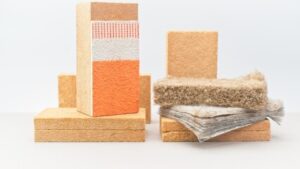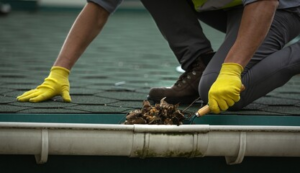As environmental awareness is increasing, contemporary building designers are increasingly opting for more environmentally friendly insulation materials. These products can help to limit the negative impacts of energy consumption in buildings.
The comparative LCA results show that market-leading insulation materials such as EPS, Stone wool, and Glass wool perform similarly in impact categories. However, renewable-based materials such as wood fiber and miscanthus perform significantly better.

Life Cycle Assessment (LCA)
LCA is an analysis of a product’s environmental impacts throughout its life cycle. It includes all the stages of a product, including extraction, transformation, use, and end-of-life disposal. It also includes the effects of the material on surrounding ecosystems. It can help manufacturers identify ways to improve their products’ environmental performance. It can be conducted using a variety of software, and it can be applied to any product or service.
A key step in LCA is defining the system boundary, which determines what processes are included and excluded from the assessment. It is important to define this boundary carefully, as it can have a significant impact on the results of the study. The next step is the inventory analysis, which determines all the inputs and outputs of a product. This includes energy flows, resource consumption, and emissions.
The final step is the interpretation of the results. This includes identifying significant impacts and comparing them to the goals of the LCA. It is also necessary to perform uncertainty and sensitivity analyses to test the assumptions and values used in the model. In addition, it is important to document the study clearly and transparently, according to ISO 14044.
This research compared the environmental impact of two insulation materials: stone wool and expanded polystyrene (EPS). It was found that the EPS is the more environmentally friendly option, but it will still cause problems for marine environments if it is not recycled properly. To reduce its ecological footprint, a more sustainable alternative is needed.
The main purpose of this study was to compare the environmental impacts of different insulation materials by analyzing the data from 47 papers. Most of the studies used a general system boundary, which is defined as cradle-to-factory gate (CtFG). The most common impact categories were GWP and CED. However, the selection of impact indicators varies widely in the literature, and it is difficult to compare the results from different studies.
The study analyzed the market-leading insulation materials stone wool, EPS, and XPS as well as the renewable-based insulation materials cork and cellulose. It was found that the environmental performance of the market-leading insulation materials is comparable, but the renewable-based insulations are more eco-friendly than the conventional inorganic insulation. The hotspots identified in the study indicate that conventional inorganic insulation would benefit from improved production processes, while organic nonrenewable materials could benefit from a more sustainable raw material. In addition, the use of binders and additives could be optimized to reduce their impact.
Life Cycle Costs (LCC)
A life cycle assessment (LCA) is a method used to evaluate the impact of materials and products on the environment. It takes into account the environmental impacts of a material throughout its entire life span, from extraction to manufacturing to end-of-life treatment and disposal. LCA is a valuable tool for the construction industry because it can help reduce the carbon footprint of buildings and improve energy efficiency. However, there are many ways to conduct an LCA and the resulting results may differ. A LCA should be done by an accredited body and follow international standards.
Fossil and mineral insulation materials currently dominate the market, but bio-based alternatives are becoming more popular. Several studies have shown that eco-friendly insulation can offer the same or better performance than nonrenewable materials and reduce environmental impacts. However, a comparative LCA is required to determine the best option.
This study analyzed the LCA of four different bio-based and two nonrenewable insulations. The analysis included cradle-to-grave assessments and a full economic assessment. The analyzed insulations were wood fiber, cellulose, flax, and hemp, as well as EPS and stone wool. The results showed that all the insulations exhibited high GWPs in their production stages and that the bio-based options had lower impacts than the nonrenewable ones.
The cellulose and flax materials were the best performers in this study, due to their low GWPs and fewer environmental impacts during the manufacturing process. The wood fiber and hemp insulations were also better compared to EPS in terms of their overall impact, but the stone wool performed worse. This was mainly due to the nonrenewable additives it contains, which resulted in a higher GWP and more environmental impacts during the manufacturing stage.
The study also assessed the environmental impacts of each insulation material at the cradle-to-grave phase, which includes transportation, installation, and demolition. It also included operational energy savings. The results showed that the cellulose and flax insulations were the best performers in this category, followed by the wood fiber and hemp. The EPS and stone wool had the highest environmental impacts in this phase, but they were less costly to dispose of at the end of their useful life.
Environmental Impact Assessment (EIA)
The insulation of buildings is a key factor in decreasing energy consumption and reducing environmental impacts in the building sector. While fossil and mineral insulation materials dominate the market, bio-based alternatives are available. To evaluate the environmental performance of these alternative insulations, a comparative cradle-to-grave LCA and LCC were performed for four bio-based and two nonrenewable insulation materials. These analyses used standardized methodology to increase the comparability of results. The investigated bio-based insulation materials were wood fiber, cellulose, hemp, flax, and miscanthus, and the nonrenewable insulations were expanded polystyrene (EPS) and stone wool. The LCA was performed according to the EF 3.0 LCA methodology, which is an extension of IEA’s LCTA method.
In general, the examined insulation materials from renewable feedstock showed significantly less environmental impact than their conventional counterparts. For example, the insulation material from pasture grass had the lowest emissions of all analyzed insulation materials. This was largely because this insulation is produced with closed production loops and by using waste or unused materials. The use of reed and seaweed insulation also had a positive environmental impact, as these materials have low treatment requirements and are grown in a relatively undeveloped area.
Another significant issue in the comparison of the different insulation materials was the amount of pollution they caused during their life cycle. This is particularly important for insulation that uses chemicals such as spray foam. The results of the NRDC study show that fiberglass is more environmentally friendly than SPF, but further improvements are needed to decrease harmful pollution from this insulation material.
Despite their lower environmental impact, the bio-based insulation materials had an overall disadvantage in the comparison against the nonrenewable insulations. This was mainly due to the requirement of additives and binders. However, it is possible to reduce the number of additives and binders in these insulation materials.
A comprehensive EIA includes a detailed analysis of the potential environmental, economic, and social impacts associated with the proposed project. This is essential for assessing whether the project will hurt the environment and whether it can be implemented without harming the environment. EIAs are typically prepared by environmental consultants, and the assessment process involves public consultations with NGOs, statutory consultees, and other stakeholders.
Hotspot Analysis
The purpose of hotspot analysis is to identify areas where the environmental impacts of a product or process are highest. This is an important part of the life cycle assessment (LCA) process and can help to identify potential areas for improvement. The results of hotspot analysis can be used to develop and implement mitigation strategies. Generally, the most significant hotspots are associated with inorganic and organic nonrenewable materials. These can be reduced by improving their production processes or utilizing more sustainable raw materials. In the case of renewable insulation materials, such as hemp and cellulose, hotspots are often related to the use of additives and binders.
The UNEP/SETAC Life Cycle Initiative has conducted a study to map existing hotspots analysis methodologies and studies worldwide, which culminated in the publication of the report “Hotspots Analysis: mapping of Existing Methods, tools and Guidance and Initial Recommendations for the Development of global guidance Footnote 1 (Barthel et al., 2014). While there is no common methodology applied at a national, sector, or product category level, some of the key methodologies share certain characteristics.
One of these characteristics is that they all incorporate a holistic approach to LCA. Moreover, most of them focus on identifying all relevant impacts in the scope of the study boundary and then applying materiality criteria or significance thresholds to determine which ones are considered “hot”.
Additionally, most of these techniques use the same system boundaries, functional unit (FU) definition, and the same LCIA method including 18 impact categories. This ensures that the results of the analyses are comparable and can be directly compared with those of other studies.
This is particularly important for assessing the performance of different insulation materials in terms of their environmental impact. In this context, it is worth noting that the comparison between biomaterials is less straightforward, as some of them perform very differently in certain impact categories. For example, stone wool performs the worst in seven of the 18 impact categories, while flax and hemp fiber perform well in four of them. However, this is only a result of a single comparative analysis and more research is needed to create a clear image of the relative performances of insulation materials.




